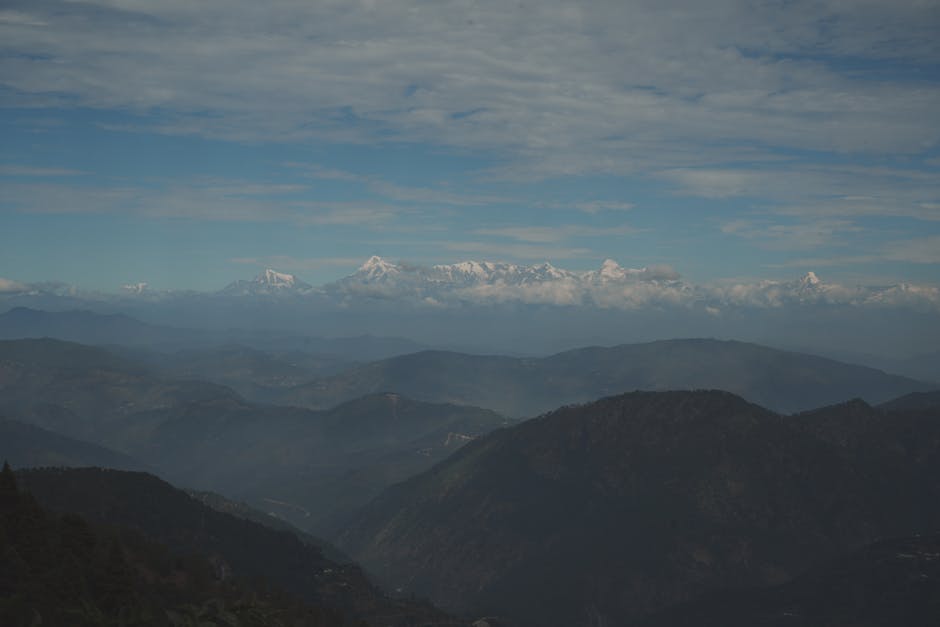⏱️ 6 min read
Asia stands as the world's largest and most diverse continent, covering approximately 17.2 million square miles and hosting over 4.6 billion people. From the highest peaks on Earth to the lowest points on land, from vast deserts to lush rainforests, Asia's geographical features present some of the most extraordinary natural phenomena on our planet. The continent's unique positioning, geological history, and climatic variations have created landscapes that continue to fascinate geographers, scientists, and travelers alike.
Remarkable Geographic Features of the Asian Continent
1. Mount Everest: The World's Highest Point Above Sea Level
Standing at 29,032 feet (8,849 meters) above sea level, Mount Everest represents the ultimate geographical superlative. Located in the Himalayas on the border between Nepal and Tibet, this massive peak continues to grow approximately 4 millimeters each year due to ongoing tectonic activity. The mountain's extreme elevation creates a unique environment where atmospheric pressure is only one-third of that at sea level, making it one of the most challenging places for human survival on Earth.
2. The Dead Sea: Earth's Lowest Land Elevation
The Dead Sea's surface sits at approximately 1,410 feet (430 meters) below sea level, making it the lowest point on Earth's land surface. This hypersaline lake bordered by Jordan, Israel, and the West Bank contains salt concentrations nearly ten times higher than ocean water. The unique geological depression continues to drop by about 3 feet annually, creating ongoing changes to this remarkable geographical feature.
3. The Himalayas: The World's Youngest Mountain Range
Formed approximately 50 million years ago when the Indian subcontinent collided with the Eurasian plate, the Himalayas represent the world's youngest major mountain range. This massive chain stretches across 1,500 miles and includes over 100 peaks exceeding 23,600 feet. The continuing collision causes the Himalayas to rise several millimeters annually, making them a living example of Earth's dynamic geological processes.
4. Lake Baikal: The World's Deepest and Oldest Freshwater Lake
Located in southern Siberia, Russia, Lake Baikal plunges to depths of 5,387 feet, making it the deepest lake on Earth. At approximately 25-30 million years old, it also holds the distinction of being the world's oldest lake. This ancient body of water contains roughly 20% of the world's unfrozen freshwater reserves and hosts over 1,700 species of plants and animals, two-thirds of which exist nowhere else on the planet.
5. The Arabian Desert: A Massive Sand Sea
Covering approximately 900,000 square miles across the Arabian Peninsula, the Arabian Desert ranks among the world's largest continuous sand deserts. The Rub' al Khali, or Empty Quarter, within this desert represents the largest continuous sand desert in the world, featuring sand dunes that reach heights of 820 feet. This harsh environment experiences some of the highest temperatures on Earth, regularly exceeding 130°F during summer months.
6. The Yangtze River: Asia's Longest Waterway
Flowing 3,915 miles from the Tibetan Plateau to the East China Sea, the Yangtze River stands as Asia's longest river and the world's third-longest overall. This mighty waterway drains one-fifth of China's land area and provides water resources for approximately 400 million people. The river's basin encompasses diverse ecosystems, from high-altitude glaciers to subtropical wetlands.
7. Indonesia's Archipelago: The World's Largest Island Nation
Indonesia comprises approximately 17,000 islands stretching across 3,200 miles, making it the world's largest archipelagic state. This unique geography spans both sides of the equator and includes four of the world's twenty-five most populous islands. The nation's position along the Pacific Ring of Fire results in over 130 active volcanoes, representing one-quarter of the world's total.
8. The Gobi Desert: A Cold Desert of Extremes
Unlike typical desert imagery, the Gobi Desert experiences freezing temperatures and occasional snowfall, making it one of the world's largest cold deserts. Spanning 500,000 square miles across northern China and southern Mongolia, the Gobi expands southward at an alarming rate of 1,390 square miles annually due to desertification. This desert contains important paleontological sites where numerous dinosaur fossils and eggs have been discovered.
9. The Maldives: The World's Lowest-Lying Country
The Maldives holds the distinction of being the world's lowest country, with an average ground level of just 4.9 feet above sea level. This nation of 1,200 coral islands faces existential threats from rising sea levels, with 80% of its land area lying less than 3.3 feet above current sea levels. The geography consists entirely of coral atolls formed atop ancient volcanic mountains.
10. Siberia: A Vast Wilderness of Extremes
Covering approximately 5.1 million square miles, Siberia represents roughly 77% of Russia's total land area yet hosts only 27% of its population. This massive region experiences some of Earth's most extreme temperature variations, with the town of Oymyakon recording temperatures as low as -96°F. Siberia contains the world's largest forest, the taiga, and sits atop vast deposits of permafrost that store immense quantities of frozen carbon.
11. The Ganges Delta: The World's Largest River Delta
Formed by the confluence of the Ganges, Brahmaputra, and Meghna rivers, this delta system spans approximately 41,000 square miles across Bangladesh and India. The delta features the world's largest mangrove forest, the Sundarbans, which serves as critical habitat for the endangered Bengal tiger. This fertile region supports over 140 million people, making it one of the most densely populated areas on Earth.
12. The Caucasus Mountains: A Natural Continental Divide
Stretching approximately 750 miles between the Black Sea and Caspian Sea, the Caucasus Mountains form a natural barrier that traditionally marks the boundary between Europe and Asia. Mount Elbrus, Europe's highest peak at 18,510 feet, rises within this range. The region's complex topography has created numerous microclimates and isolated valleys that preserve unique linguistic and cultural diversity.
13. The Deccan Plateau: A Ancient Volcanic Formation
Covering most of central and southern India, the Deccan Plateau represents one of Earth's oldest landforms, composed primarily of volcanic basalt rock. This elevated region averages 2,000 feet in elevation and was formed by massive volcanic eruptions approximately 66 million years ago. These ancient lava flows created some of the world's thickest sequences of volcanic rock, reaching depths of over 6,500 feet in some areas.
14. The Ural Mountains: Earth's Oldest Mountain Range
Extending approximately 1,550 miles from the Arctic Ocean to Kazakhstan, the Ural Mountains represent one of the world's oldest mountain ranges, formed between 250-300 million years ago. These ancient mountains traditionally mark the continental boundary between Europe and Asia. Despite their age and relatively modest heights, with the highest peak reaching only 6,217 feet, the Urals contain rich mineral deposits including precious metals, gemstones, and fossil fuels.
Understanding Asia's Geographic Significance
These fourteen remarkable geographical features demonstrate Asia's extraordinary diversity and global significance. From holding both the highest and lowest points on Earth's surface to containing the world's oldest mountains and youngest peaks, Asia's geography represents billions of years of geological evolution. The continent's varied landscapes support immense biodiversity, provide resources for billions of people, and continue to shape global climate patterns. Understanding these geographical marvels helps us appreciate the dynamic nature of our planet and the delicate balance between human civilization and natural forces that continues to evolve across this vast continent.






















